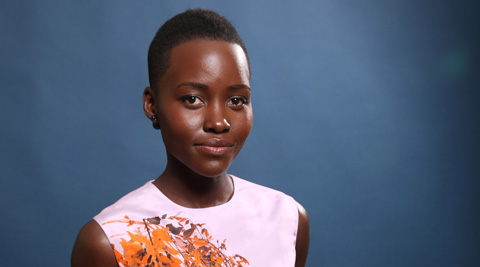 Lupita Nyong’o poses for a portrait at the 86th Oscars Nominees Luncheon, in Beverly Hills, Calif. (AP)
Lupita Nyong’o poses for a portrait at the 86th Oscars Nominees Luncheon, in Beverly Hills, Calif. (AP) Summary
While shooting portraits, get a good hold of aperture, on which both depth of field and exposure depend.
Gaurav Mishra, Technical Officer with Nikon India tells you how to take stunning portraits…
Tip 1: Mainly while shooting portraits, photographers should get a good hold of aperture on which depth of field and exposure both depends. To make this job easier Aperture Priority Auto Exposure mode (A mode) can be a good idea. In A mode photographer has the liberty to control aperture while camera automatically adjusts the shutter speed. In camera, one can set Picture Control to portrait and get the best possible natural colors in camera itself. Further the photographer can control sharpness, saturation, brightness, contrast and hue even before clicking the portrait.
Tip 2: Preferably, the best lenses for portrait photography are the fixed focal length lenses. Though the kit lens provided with camera produce good high quality portraits, but once can look and try fixed focal length lenses with faster aperture like f/2.8, f/1.8 or even f/1.4 to produce nice astonishing Bokeh in the back ground. From NIKKOR line-up one can look for AF-S NIKKOR 50mm f/1.8G lens and other prime lenses, which can easily fit in pocket and can make portraits like a pro.
Tip 3: To or not to take portraits always with shallower depth of filed! Taking portraits with shallow depth of field can make your portraits stand out of the background, also if you want to explore your creativity and want to include background elements in the frame, greater depth in your composition can do the needful. Environmental portrait photography has been one of the most admired and tried by world known big shots. This type of photography is used to establish the character of your portraits in their surroundings. It is generally achieved by keeping the portrait/person in less than 50 per cent of the total frame and including background in focus by choosing higher f-numbers.